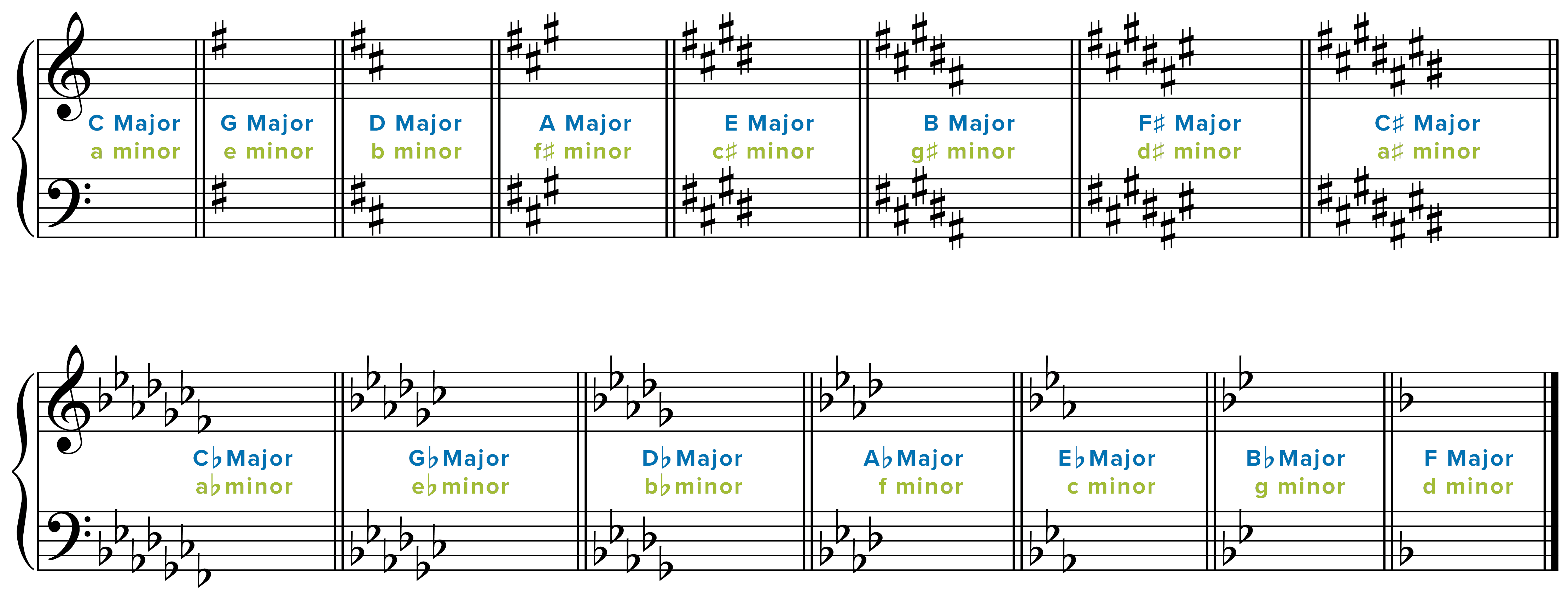10 Tips and Tricks for Sight Reading
We’ve consulted with music educators who specialize in the important skill of sight reading music to make it less scary and (maybe even) a little enjoyable!

Sight reading, or the ability to play or sing a piece of music that you've never seen or hears before, by reading it from the written music, seems to be one of those challenges that either a beginning musician loves or has recurring nightmares about. For those of us in the latter category, we’ve consulted with music educators who specialize in the important skill of sight reading music to make it less scary and (maybe even) a little enjoyable!
Daily Sight-Reading Prep
The first few tips and tricks we have for you apply to the things you can do on a daily basis to improve your sight-reading skills!
1. Familiarize Yourself with a Variety of Rhythms
Sight reading can look different based on whether you are an instrumentalist or a vocalist, but there is one thing both groups have in common: rhythm. Familiarizing yourself with a variety of rhythms (4/4, 3/4, 6/8, etc.) will help you to be ready in any situation. Here’s a website we found with helpful, free rhythm exercises.
2. Memorize Key Signatures
Memorizing your key signatures is especially helpful for instrumentalists, as you need to be aware of how many sharps or flats are coming up in your upcoming sight-reading exercise. It can also be helpful for vocalists if you’re timbre is more comfortable in certain key signatures. This may take a bit of time initially, but in the long run, it will not only make sight-reading easier but practicing and performing too!

3. Know Your Scales
For instrumentalists, knowing your scales will help you tangibly memorize your key signatures. It will also create muscle memory for fingerings and hand placement for each key signature so that when you begin to sight-read, your hands will do what they are used to doing!
For singers, scales have a different purpose. Many singers use scales in the form of Solfège, an exercise used for sight-reading vocal music in which each scale degree is assigned a coordinating syllable. Solfège helps vocalists to memorize intervals, so they can easily identify pitches, regardless of what key they are in. Check out our article: Solfège: What Is It, And How Is It Used? to learn more!
If you are a vocalist who prefers not to use solfège you should still practice your scales so that you can be familiar with the tonality differences in major and minor keys, as well as intervals between pitches.
4. Practice Without A Safety Net
We’ve all used safety nets when it comes to sight reading. We think to ourselves, I can definitely sight-read this, but just to be sure…
For example, an instrumentalist might look down at their hands while they attempt to sight-read. A vocalist might use a piano to define those hard-to-read-notes. Whatever you use for your safety net, do your best to practice without it. It’s good to make mistakes. Without them, how can you learn?
5. Practice Sight-Reading Different Types of Music
When it comes to sight-reading, you never really know what you’re going to get. You could be presented with anything from a lively tango to a slow jazz ballad. If you’re a vocalist, you might even be presented with different languages! So in order to avoid sheer panic, familiarize yourself with different styles of music, rhythms, and scores. You’ll be able to relax when you’re presented with a new piece of music and you can say, “Oh yeah! I’ve seen this before.”
Right Before Sight-Reading
There are a few things you should do before diving straight into your sight-reading…
6. Examine The Piece You’re Sight-Reading
Before you begin to play or sing, take a moment to mentally digest the music in front of you. Tap out the rhythm, read through the notes, and follow the structure of the song. Also, take a moment to identify any spots or page turns that may cause you trouble.
7. Identify Annotations in the Piece
Sight-reading is more than just notes and rhythm! Take a moment to look for any dynamic changes or musical direction notated within the piece. Also, pay close attention to tempo and time signatures to make sure they don’t change within the song. Showing that you can follow annotations will demonstrate impressive musicality.
8. Make Markings on the Paper (Or on Your Tablet/iPad)
If you are allowed to make markings in your music ahead of time, DO IT! As we mentioned earlier, you will want to take notice of any areas in the music that might give you trouble. For example, if you’re a vocalist and you see a big jump in the vocal line, you may want to circle or highlight it. You will likely be trying to remember a lot of things while you are sight-reading, so visual reminders can be very helpful in the moment.
9. Sound the Whole Piece out in Your Head
Last but not least, go through the entire piece from start to finish as if you were giving a mental performance. If allowed, you can even hum the song as you read. Though it’s important to pay attention to the details, it’s also important to get an idea of the song in its entirety. As you are going through, ask yourself these questions:
- Where is the climax of the song?
- What is the main melody?
- Are there any patterns repeated throughout?
- Does the song have definitive sections?
During The Sight-Reading
10. Breathe, Relax and Keep Going, Even If You Make a Mistake
Sight-reading isn’t meant to be perfect. And just like anything else you do, the more you practice, the better you will get! So don’t focus on the mistakes that you make during the performance, and don’t feel as though you have to stop and correct them. Just keep going, do the best you can, and remember that by testing your abilities as a musician, you are making yourself better in the long run.
Happy reading, and remember to stay musical!

